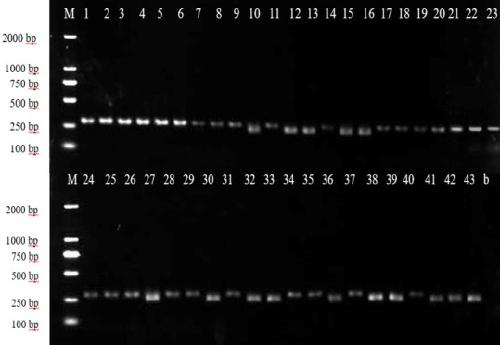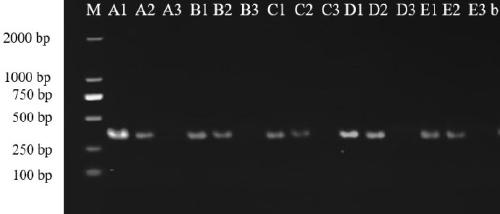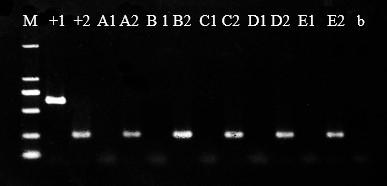Toxic amanita species identification method based on DNA mini-barcode technology and application
A species identification and micro-barcoding technology, applied in the field of food quality and safety testing, can solve problems such as damage and inability to extract genes
- Summary
- Abstract
- Description
- Claims
- Application Information
AI Technical Summary
Problems solved by technology
Method used
Image
Examples
Embodiment Construction
[0022] The present invention is further described by means of examples, but the present invention is not limited only to the following examples.
[0023] This example is to evaluate the accuracy of the amplification efficiency and identification of the DNA micro-barcode of the genus Amanita through the following tests.
[0024] 1. Experimental materials
[0025] The names of 43 mushroom samples of 33 species of Amanita used in this study are shown in Table 1. Among them, Pseudomonas amanita was provided by the Chinese Center for Disease Control and Prevention, and the rest of the samples of Amanita were provided by Professor Chen Zuohong of Hunan Normal University for morphological identification. ITS , Ribosomal large subunit (Large SubunitRibosomal, LSU ), the second largest subunit of RNA polymerase (the Second Largest Subunit of RNAPolymerase II, RPB2 ), β-tubulin ( β-tubulin ) 4 DNA barcodes to identify its species authenticity.
[0026] Table 1 Information of co...
PUM
 Login to View More
Login to View More Abstract
Description
Claims
Application Information
 Login to View More
Login to View More - R&D
- Intellectual Property
- Life Sciences
- Materials
- Tech Scout
- Unparalleled Data Quality
- Higher Quality Content
- 60% Fewer Hallucinations
Browse by: Latest US Patents, China's latest patents, Technical Efficacy Thesaurus, Application Domain, Technology Topic, Popular Technical Reports.
© 2025 PatSnap. All rights reserved.Legal|Privacy policy|Modern Slavery Act Transparency Statement|Sitemap|About US| Contact US: help@patsnap.com



